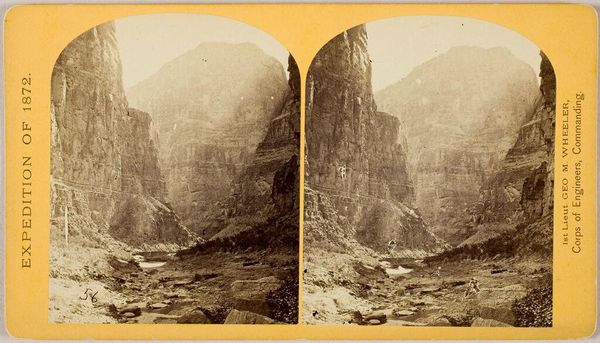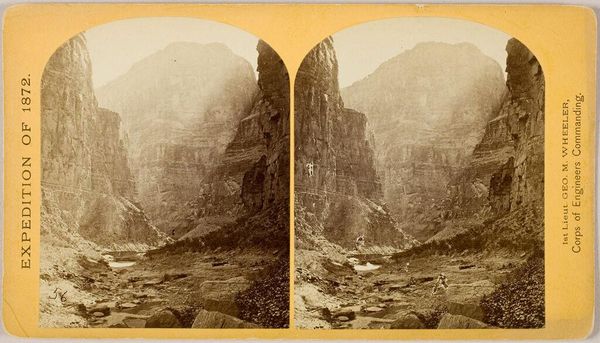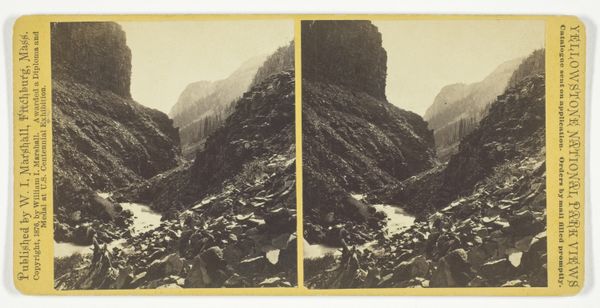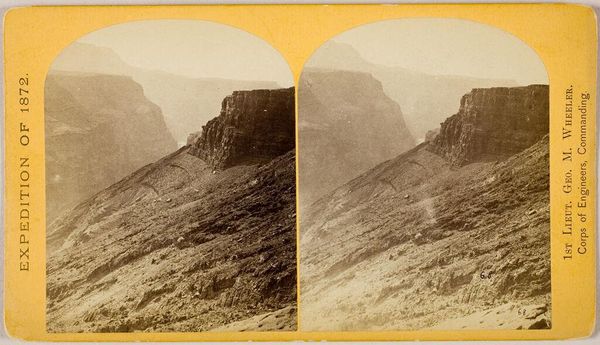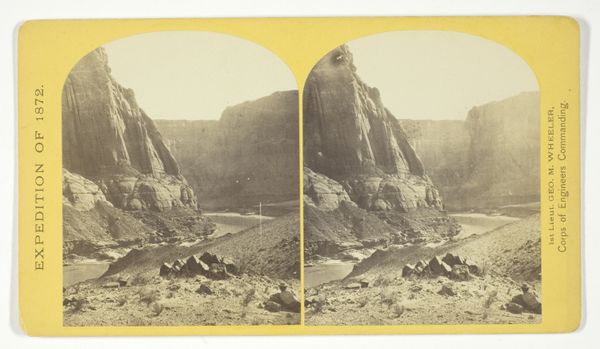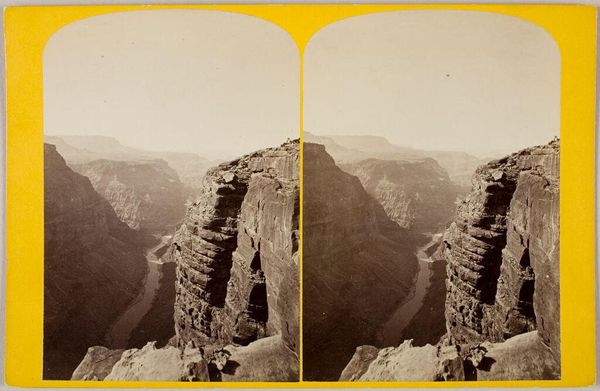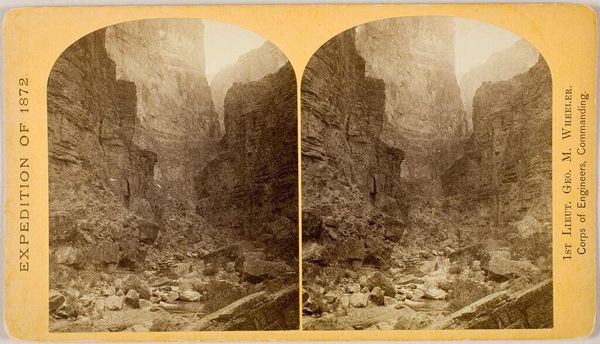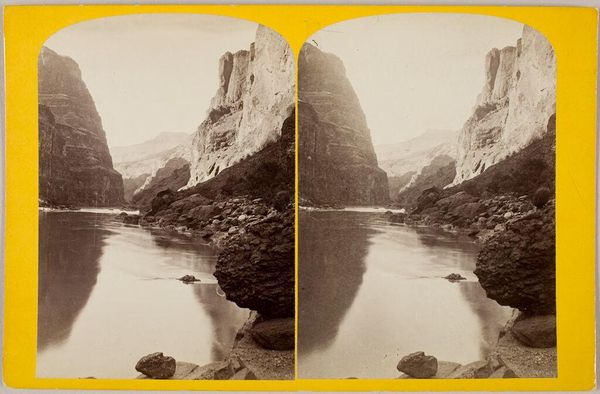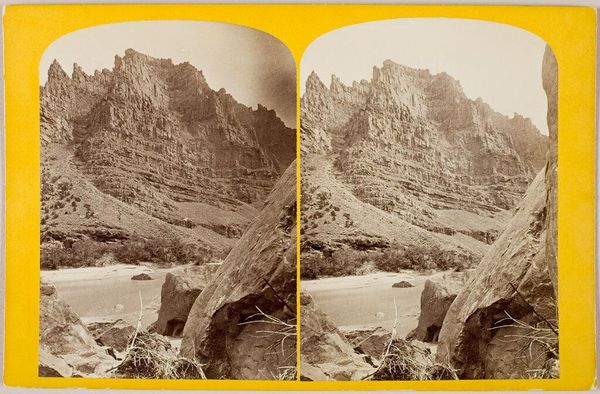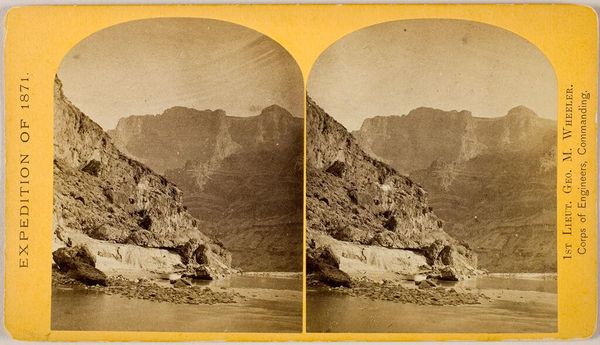
The mouth of Kanab Creek. The beds of the Colorado River and its tributary here lie in gorges cut by the running water to the depth of about 3.500 feet below the general surgace of the country. The highest point seen in the picture is 2.500 feet above the water, and the walls are here too steep to be scaled 1872
0:00
0:00
photography, albumen-print
#
16_19th-century
#
landscape
#
photography
#
hudson-river-school
#
united-states
#
albumen-print
#
realism
Dimensions: 9.3 × 7.4 cm (each image); 9.9 × 17.7 cm (card)
Copyright: Public Domain
This is a stereoscopic albumen print of the mouth of Kanab Creek, made in 1872 by William Bell during the U.S. Geographical Surveys West of the 100th Meridian. The dual image creates an immersive stereoscopic effect, a kind of optical theater. The photograph is striking for its sepia tones and the stark contrast between the shadowed depths of the gorge and the sunlit peaks above. Bell uses the stereoscopic format to emphasize depth and scale, capturing the monumental grandeur of the canyon's geology. This manipulation of perspective invites the viewer to engage with the sublime vastness of the American West. Bell’s photograph transcends mere documentation. It offers a carefully constructed view of the landscape, an almost theatrical spectacle that emphasizes the power and scale of nature. The photograph challenges our perception of space, pushing the boundaries of how we understand our relationship with the natural world.
Comments
No comments
Be the first to comment and join the conversation on the ultimate creative platform.
